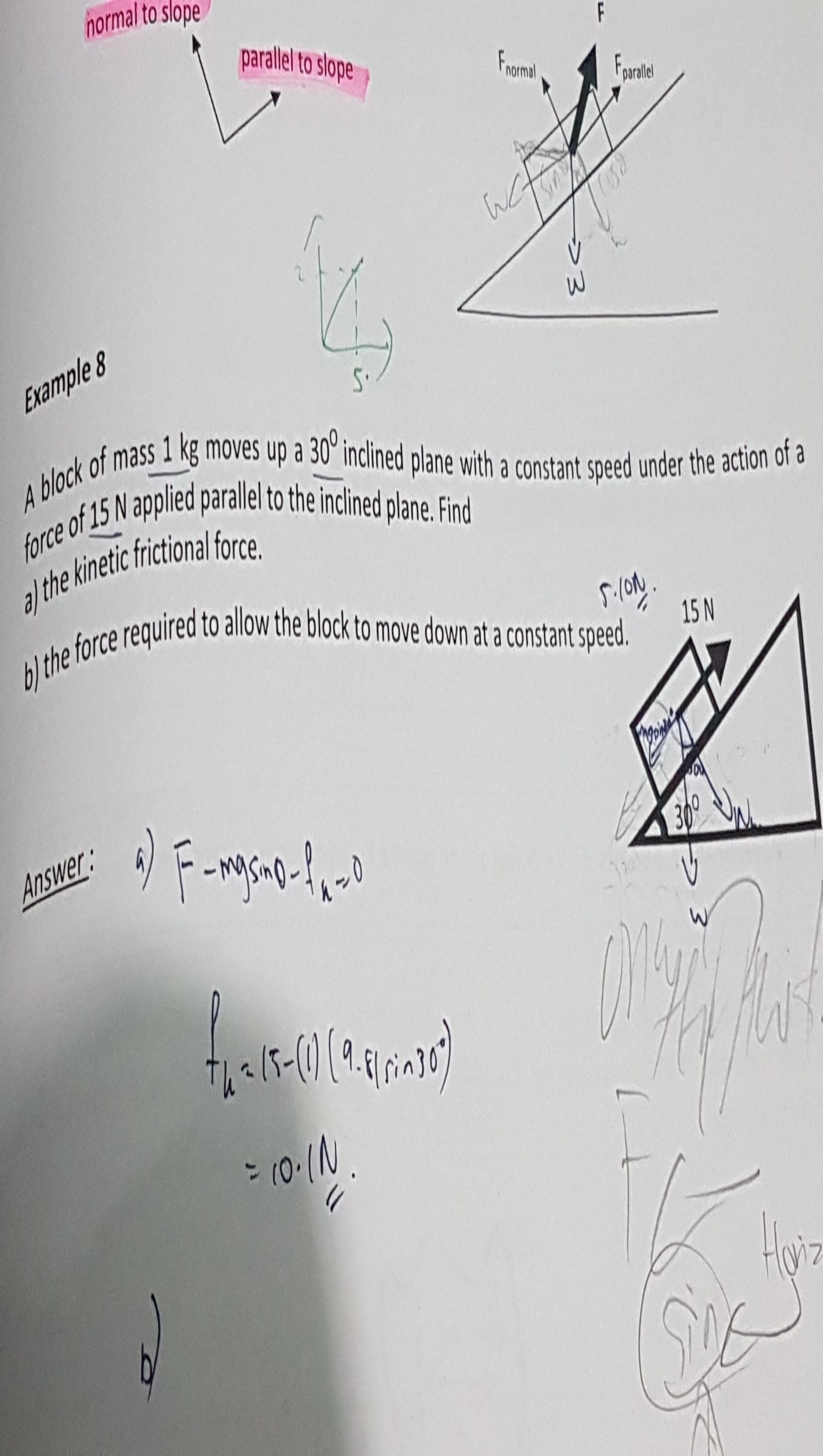Christmas MT's answer to Angelica's Junior College 1 H2 Maths question.
done
{{ upvoteCount }} Upvotes
clear
{{ downvoteCount * -1 }} Downvotes

Resultant force is what it is: a net effect of all the forces acting on an object.
You can consider "resultant force on an object" to be similar in concept to "effective resistance in a circuit".
So no, mg sin x is not a resultant force. No force is a resultant force except... the resultant force.
mg sin x is the component of the weight along the slope. As you have learnt in projectile motion by now, every vector can be split into two component vectors that are perpendicular to each other.
On flat ground, you care about the forces along the ground and normal to the ground. Weight in this case is perpendicular to the ground, which means it had nothing to do with motion along the ground. This is why it was frequently not considered in calculations in most O-Level questions, because most O-Level questions set the question on flat ground.
On a slope, you care about the forces along the slope and normal to the slope. Weight in this case, happens to be neither normal nor along the slope. This means we have to split it into 2 components, one perpendicular to the slope (and the component that will have nothing to do with movement along the slope), and one parallel to the slope.
---
To actually do your question, the assumption will be that the magnitude of the frictional force remains the same. You want to move downwards at constant speed, meaning you want
F + mg sin x - friction = 0
Sub in all the appropriate values and you are done (I assume I don't have to do this for A-Level students).
You can consider "resultant force on an object" to be similar in concept to "effective resistance in a circuit".
So no, mg sin x is not a resultant force. No force is a resultant force except... the resultant force.
mg sin x is the component of the weight along the slope. As you have learnt in projectile motion by now, every vector can be split into two component vectors that are perpendicular to each other.
On flat ground, you care about the forces along the ground and normal to the ground. Weight in this case is perpendicular to the ground, which means it had nothing to do with motion along the ground. This is why it was frequently not considered in calculations in most O-Level questions, because most O-Level questions set the question on flat ground.
On a slope, you care about the forces along the slope and normal to the slope. Weight in this case, happens to be neither normal nor along the slope. This means we have to split it into 2 components, one perpendicular to the slope (and the component that will have nothing to do with movement along the slope), and one parallel to the slope.
---
To actually do your question, the assumption will be that the magnitude of the frictional force remains the same. You want to move downwards at constant speed, meaning you want
F + mg sin x - friction = 0
Sub in all the appropriate values and you are done (I assume I don't have to do this for A-Level students).
Date Posted:
7 years ago
In case it wasn't clear: Yes, mg sin x is a force due to gravity.
Thanks!
Thanks!


